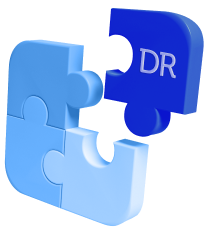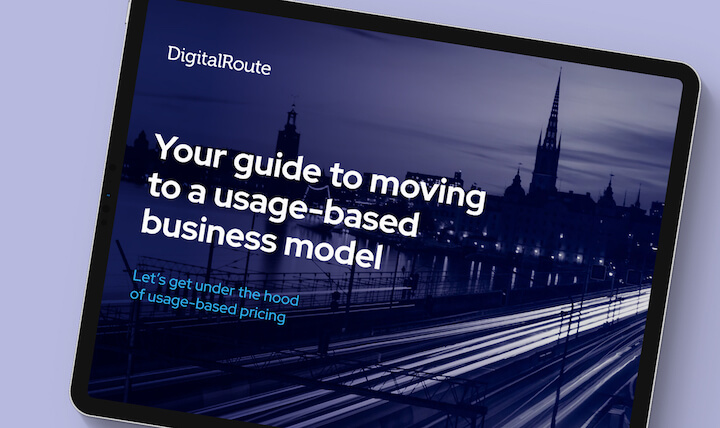Usage-Based Pricing
Usage-based pricing is a pricing structure where customers pay for what they use.
What Is the “Usage” in Usage-Based Pricing?
Usage refers to a metric about how a product or service is used. It can be most easily understood when you look at smartphone and internet plans – where the amount of data used is the usage metric. If you store data in the cloud, the volume of data stored is usage.
But the “usage” in usage-based pricing can really refer to any kind of metric. If you drive your car through an electronic road toll, the image of your license plate or the data sent from your tag is usage. If you rent a scooter, the data about your time on the scooter or the distance you travel is also usage.

How Does a Usage or Consumption-Based Pricing Model Work?
To offer usage-based pricing, companies first need to decide on what usage metric they will charge for. This metric should be directly related to the value that the service provides, and it should be easy to understand and measure.
Usage-based pricing can apply to each and every transaction, or it could be set up in tiers, so that you get a certain amount of usage for a certain price, and a greater amount of usage for another price.
Once the usage metric is established, companies need to collect the data about usage, assign it to specific customers, and enrich the data with customer information or relevant pricing plans. Then this data is sent to billing systems, where an invoice is created, and also to other business systems, like analytics tools.
Why Do Companies Offer Usage-Based Pricing?
Companies like usage-based pricing for a number of reasons. With usage-based pricing, it can be easier to get new customers. Customers don’t have to sign up for a lengthy subscription, so usage-based pricing makes it easier or less risky for them to try a service.
Companies also like usage-based pricing because it makes it easier to grow revenue when usage increases. Unlike some subscriptions, where you can use as much of a service as you want for no extra charge (which costs companies more money), usage-based pricing ensures that as usage goes up, revenue goes up.
What Is Usage-Based Billing and What Makes It Challenging?
Usage-based billing is when a company charges a customer for their use of a product or service. Usage-based billing can be immediate and in real-time, or it can be periodic, such as a monthly invoice. An example of real-time usage-based billing would be when you immediately pay for a service when you use it – such as booking an Uber.
In the real-time scenario, usage-based booking is challenging because the service provider often has to collect a lot of data at once and immediately bill you for it. With the Uber example, this could be data about who you are, where you are going, and whether a surge fee should apply if there is high demand.
One of the biggest challenges is having a system that can measure your usage over time and still present it on a single invoice.
With periodic usage-based billing, these same challenges apply, but new ones are added. In the electric scooter example, the service provider has to measure how many minutes you have used the service.
It gets more complicated when you start and stop using a service several times over a longer period – but companies still need to send you one invoice at the end of the month. This can involve huge volumes of data that still need to be processed according to different pricing rules and business plans.
Why Do SaaS Companies Offer Usage-Based Pricing?
SaaS companies offer usage-based pricing because it helps them grow revenue and users faster. As customers use more of their service, they earn more money. Usage-based pricing also makes it easy for anyone in an organization to start using a service. In contrast, if a company offers their software as a service based on the number of seats, this often doesn’t account for how much each person uses the service. In this scenario, when usage goes up, operating costs go up for the SaaS provider, but revenue doesn’t. Usage-based pricing is also more common for SaaS companies because there are relatively easier metrics to measure – the volume of data files transferred or stored, the number of minutes the service is used, and so on. One clear benefit for both SaaS companies and their customers is that usage-based pricing demonstrates the value of the service instantly. If a customer doesn’t like the service, they don’t use it, and they don’t pay. This leads SaaS companies to take a product-led growth approach – the better they make the product, the more it is used, and the more revenue they make.
What Other Industries Offer Usage-Based Pricing?
Usage-based pricing is used across a wide variety of industries. Most of us experience usage-based pricing every month when we pay our water or electricity bill. Communications service providers (telephone and connectivity operators) were early in seeing the advantages of usage-based pricing. Instead of offering only a few, simple price plans, these companies offer usage-based pricing for any type of scenario. You can pay as you go, pay at the end of the month, pay based on which countries you call and when, and so on. Usage-based pricing is also growing in the travel and transportation sector. Many car manufacturers now offer a service where you can use their cars based on how you use them. Instead of a long-term lease, you can try a car for a short period of time, and if you don’t like it, you can stop the service or try another car. Media and entertainment companies are also seeing the value in usage-based pricing. Just like with the telecommunications industry, they are starting to understand that simple subscriptions are not enough to grow revenue and meet the needs of all their customers. They can charge based on how much of their content is consumed and at what quality. There are also growing partnerships between streaming services, content creators, distributors and advertisers, where revenue is shared based on customer usage.

What software is needed for usage-based billing?
When offering usage-based pricing, most companies use software solutions that cover subscription, billing and revenue management. This could be a solution offered by only one software provider, or an ecosystem of software that needs to be integrated.
At DigitalRoute, our software focuses on collecting and processing usage data and sending it to other systems, such as systems for usage-based billing, in a format that those systems understand. Since usage-based pricing is relatively new compared to legacy systems, most systems aren’t designed to handle the volume and variety of data that usage-based pricing generates. Many systems are also often not set up for billing based on usage, but instead were designed for one-time payments, or simple subscriptions.



